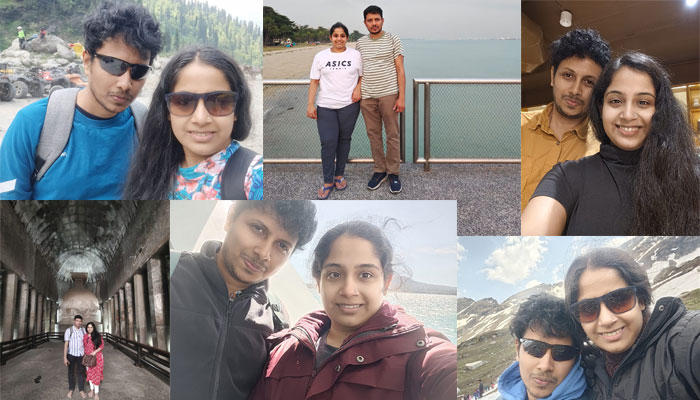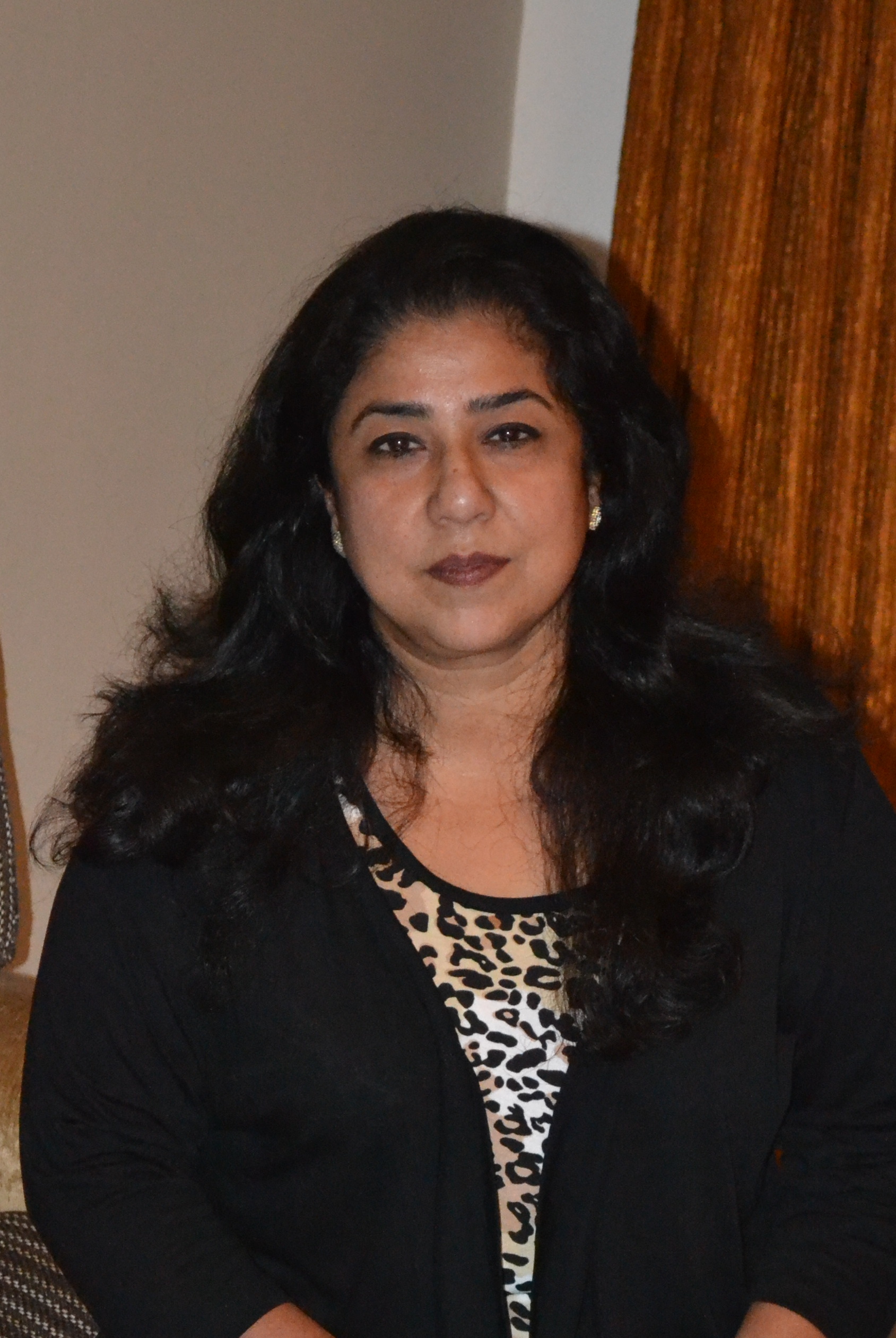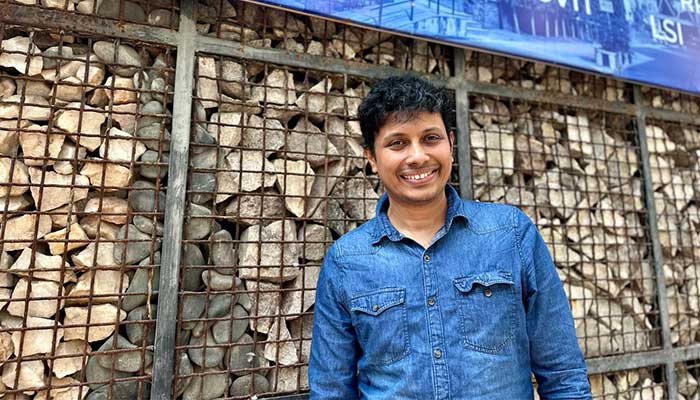Uncrewed Aerial Vehicles (UAVs) is what Harikumar Kandath regards as his bread, butter and jam. He explains.
Harikumar Kandath’s Ikigai and passion lie in Aerial robotics, micro UAVs and problems related to flight dynamics. These include multirotors, fixed-wing UAVs and flapping wing ones. How does the drone navigate when flying close to buildings, confined spaces or in the presence of external disturbances and parametric uncertainties? The assistant professor at IIITH’s Robotics Research Center and his team also study the control and coordination of multi robot systems, reinforcement learning, robust control and state estimation, and evolving controllers.
Jet stream from Palakkad to the Far East
Harikumar’s early education was in his native town of Palakkad where he studied in both private and government schools. With a B.E in Electrical and Electronics Engineering from the University of Calicut and Masters from NIT Trichy in Control and instrumentation, he joined TCS Bombay. “It was my first industrial experience, working on software related to Enterprise Resource Planning (ERP). I quickly realized that my heart was in academic research, where you come across scholars who share an equal passion for new insights and experiences in different research areas”, he notes.
After clocking a year of corporate experience, Harikumar enrolled at IISc, Bangalore for his Ph.D in aerospace engineering, studying the flight dynamics of very small palm-sized UAVs. “During one’s Ph.D, you are like a racehorse with blinkers on, hyper-focused on the goal. But your post-doctoral work opens multiple facets to your research”, he muses. “My first international exposure was at the University of Macau in China (2016), where I worked on slightly bigger UAVs, designing algorithms for multi vehicles in flight.”
Harikumar soon moved to the Nanyang Technological University (NTU), Singapore (2016-18), as a research fellow at the ST engineering corporate lab, a joint collaboration with ST Engineering and NTU. “We built solutions for issues posed by ST Engineering and looked into the problems of navigating multiple UAVs, with peer to peer communication”, he explains. One of his most interesting projects that he enjoyed, was demonstrating an engineering solution for two UAVs to follow a convoy. “We had to come up with a practical design for the UAV robots to synchronize its turns and navigate in tandem with the lead vehicle, factoring in collision avoidance and anticipating sudden movements of the convoy”.
From July 2018, he moved to NTU’s School of computer science, where he worked on the control design for vertical takeoff and landing vehicles. It was part of an ambitious exploration where the end game was to design a prototype for an autonomous passenger-carrying UAV. At his third post-doctoral stint at the Singapore University of Technology and Design, he worked on evolving controllers for UAVs. The Big Idea is based on the principles of how things evolve. “We were looking at a feedback mechanism, studying how the controller evolves its structure as the situation changes”. For example, while designing intuitive flight control in congested areas, one would take into account sudden aerodynamics disturbances.
Armed with a Ph.D in aerospace engineering from IISc Bangalore and three international post-doctoral tenures, the young man from Palakkad was ready to take on his first faculty position at IIIT Hyderabad in March 2020.
And that’s when he hit that small air pocket.
An eerily silent campus and warming up to the IIITH ecosystem
Three days after Harikumar landed on the IIIT Hyderabad campus, the first covid lockdown was announced. “I was in the Guesthouse for nearly 3 months and only got to see ‘Gopi Uncle’, the guesthouse manager and the man who brought me my meals. It was quite an unusual introduction,” he grins.
“I found IIITH to be most friendly and welcoming, especially for new faculty. What sets IIITH apart is the non-academic interaction among the faculty”, he reflects. “There are great bonding moments in chit chat with chai and the annual outing events. In the normal academic world, where publish or perish is the catchphrase and one is stuck in the musical chairs of research obligations and project fundings, being in the IIIT Hyderabad biosphere is something quite apart. There is not much hierarchy. You can just walk into your colleagues’ office without any compunctions, which is not that common in many academic campuses around here”.
UAVs for freight and beyond
“While textbook equations give us theoretical insights, we fly UAVs to understand it better; as there is a lot of difference in theory and practice, especially in aerodynamics. We analyze the flight data and try to bridge that gap between theory and practice”, explains Harikumar. “I teach a course on UAV design and also co-teach three courses with Prof. Aftab Hussain, Prof. Nagamanikandan Govindan and Prof. Tejas Bodas”. A study on bird flight and flapping wings, looks at designing a mechanism to mirror flight behavior of a bird and understand the natural movement of flapping wings. One future project is an all-weather versatile airborne vehicle, with fault tolerant features to enhance its capabilities and fly in bad weather conditions.
A collaborative project with I-Hub, CVIT’s Prof. Ravi Kiran S and EERC’s Prof. Pradeep Kumar R is collecting data using drones to estimate specific building parameters to gauge the earthquake-resistant capacity of a building. “We are developing ML based modules for automating this process”, he notes. Other projects are with TiHAN (IIT Hyderabad) and IIIT Sricity where Prof. Deepak Gangadharan from CSG is involved. Some industry relevant research has been carried out with funding from companies like Collins Aerospace and Airbus. There is also a large training program focused on UAV and related technologies, funded by MeitY, being carried out jointly with other RRC faculty.
The josh in civilian drone technology is presently gathering momentum in India. As of now, the primary application is in agriculture, for aerial spraying of pesticides over large farm tracts, as well as for forecasting agricultural statistics and yield prediction. Image data from drones is used for large construction monitoring. Drones are also being used in the health sector for delivery of medical aid to remote areas with mountainous terrain, rivers and forests.
“For multiple UAVs carrying parcels, granular planning is required, to create flight paths to avoid mid-air collision and to meet time and space constraints. In the future, given the push for Atmanirbhar India, I feel that projects on flight safety will become an important area as there will be a lot of expansion in UTM (UAS Traffic Management). While there is a plethora of literature, there are critical difficulties when you shift from theory to practice. Apart from that, autonomous passenger drone transportation is a very ambitious goal”, says Harikumar.
That which shapes his dream
Harikumar cherishes his early roots in Palakkad, Kerala, where his father was in government service. Indhu, his partner hails from the neighboring Thrissur district. He jokes that he and his partner are diametrically opposite in taste. While she has great taste in literature and is into music, dance and reading, he prefers watching serious documentaries. “Once we decided to read a book together. But in the last couple years, we haven’t progressed beyond the first few pages”, he laughs.

He has an eclectic taste in classic film songs from the 1970s to 2000, in Hindi, Tamil, Malayalam and occasionally English. “I played a lot of cricket and badminton in my college years, dabbled occasionally in football and table tennis but now I’m more into cards and carroms”, he reports. “I enjoy travelling and my most memorable conference was in Thessaloniki, Greece. It was a beautiful tourist destination by the sea and being in the company of likeminded scholars, discussing non-research topics was a great experience”.
Harikumar Kandath’s advice to new students is this. Be very focused on academics, because your time at IIIT Hyderabad will pay dividends later. But the banter and camaraderie between classmates is equally important and it is something that you will carry forward in life.

Deepa Shailendra is a freelance writer for interior design publications; an irreverent blogger, consultant editor and author of two coffee table books. A social entrepreneur who believes that we are the harbingers of the transformation and can bring the change to better our world.


Next post